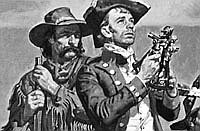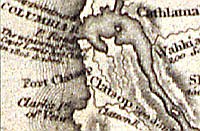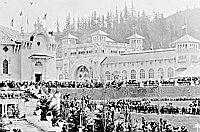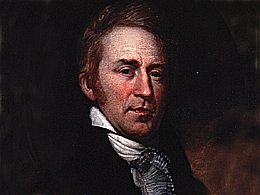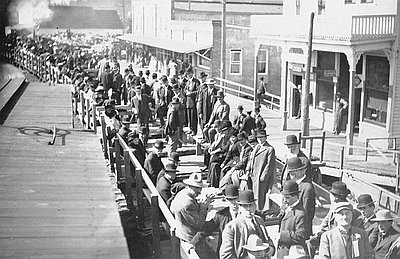Celebrating Settlement: Agrarian Oregon
The era of the Exposition was a time of agricultural optimism. Wheat farmers had begun pushing south from the Columbia River in the 1880s and were now supporting new towns like Wasco and Moro. Sheepherders traded their wool at Shaniko at the terminus of the Columbia and Southern Railroad. Hood River orchardists were sawing down the Douglas fir trees that filled the valley, killing the stumps with arsenic, and planting apple trees. James J. Hill began to push the North Bank Railroad (now the Burlington Northern) along the Columbia from Pasco to Portland in 1906 and Swift and Company built a huge new meat packing plant in North Portland. Headlines in a special issue of the Oregonian on January 1, 1910, told the excitement: “Wheat Output Will Be Enormous” — “Interior Towns Face Bright Future” — “Oregon Forging to Front as Livestock State.”
Each county had an alcove to show off its products and accomplishments. Baker and Josephine counties displayed mineral samples. Lane showed off canned goods. Douglas featured bunches of grapes and bottles of wine. Morrow and Umatilla highlighted sheaves and bags of grain. Stuffed sheep overlooked the Marion County section. Elk towered over Union County.
It is worth a special look at the Coos County exhibit, for the coastal community erected its own building, assembled from Coos County materials. “I was proud of Coos County,” wrote one visitor in her diary. “She is the only county that has a building. . . . one of their exhibits was the ‘North Bend manufacturing Company’. . . they had all sorts of fish, clams and oysters. . . some fine doors and other things.” The interior was paneled with coastal myrtle, maple, ash, madrone, chittum, yew, and cedar. Inside was myrtle wood furniture, veneers, dairy products, and coal. By the front door was a 403-year-old Port Orford cedar log with a 173-year-old spruce growing from it.
Coos County was in the midst of a logging boom. At the time of the fair it already had eleven saw mills, twelve creameries, two woolen mills, and six shipyards. Dr. J.T. Marshfield, reported the Oregonian, called Coos Bay “a modern Venice with 100 gasoline launches to take the place of gondolas.” A huge integrated mill would open in 1908, building a railroad to the company town of Powers, drawing lumber from the hills along the Coquille River, and shipping lumber on modern ships to California, Latin America, and the Pacific.
© Carl Abbott, 2004. Updated and revised by OHP staff, 2014.
